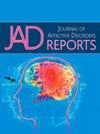Ambulance attendances involving personality disorder – investigation of crisis-driven re-attendances for mental health, alcohol and other drug, and suicide-related events
Q3 Psychology
引用次数: 0
Abstract
Background
Mental health crises experienced by people with personality disorder often necessitate emergency service involvement. Ambulance services are frequently first responders. Acute crisis presentations of people experiencing personality disorder can be a source of anxiety and frustration for emergency workers, especially when they recur frequently. This study evaluated the utilisation of ambulance services for mental health, alcohol and other drug, and suicide-related events in association with personality disorder, to understand how system responses can be improved.
Methods
We conducted a retrospective study of coded electronic patient care records from the Victorian-arm of the National Ambulance Surveillance System between January 2012 and May 2019. Records where ‘borderline personality disorder’ or ‘other personality disorders’ was noted were assessed using patient demographics, presentation, outcome, and re-presentation frequency, in comparison with attendances for ‘other mental health conditions’.
Results
76,929 attendances for 9,632 people with borderline and/or other personality disorder were identified. Most presentations involved suicide attempts, suicidal ideation, non-suicidal self-injury, and drug and alcohol harms. Most attendances (87.9%) were transported to emergency departments. Re-attendance was common; 8.3% of people accounted for 49.6% of all attendances involving personality disorder.
Limitations
The study data likely underrepresent the prevalence of personality disorder in ambulance attendances, as a diagnosis was noted by paramedics only if it was considered relevant to the attendance and volunteered at the scene.
Conclusions
Two-thirds of service users noted to have personality disorder required ambulance services three or more times per year, highlighting the need for evidence-based alternatives to reduce the incidence of mental health crises and reliance on emergency services. These findings are a valuable reminder to emergency clinicians that they are primarily seeing service users who have the most severe presentations, and may serve as a bulwark against therapeutic nihilism.
涉及人格障碍的救护车服务-调查危机驱动的精神健康、酒精和其他药物以及自杀相关事件的再次服务
人格障碍患者所经历的心理健康危机往往需要紧急服务介入。救护车服务通常是第一反应者。患有人格障碍的人的急性危机表现可能是急救人员焦虑和沮丧的来源,尤其是当它们频繁复发时。本研究评估了救护车服务对心理健康、酒精和其他药物以及与人格障碍相关的自杀相关事件的利用情况,以了解如何改善系统反应。方法:我们对2012年1月至2019年5月期间国家救护车监测系统维多利亚州部门的编码电子患者护理记录进行了回顾性研究。记录“边缘性人格障碍”或“其他人格障碍”的记录使用患者人口统计学、表现、结果和再表现频率进行评估,并与“其他精神健康状况”的就诊人数进行比较。结果9632例边缘性和/或其他人格障碍患者共76929人次就诊。大多数报告涉及自杀企图、自杀意念、非自杀性自残以及药物和酒精危害。大多数病人(87.9%)被送往急诊科。再次出勤很常见;8.3%的人有人格障碍,占所有出席人数的49.6%。局限性:研究数据可能没有充分反映出人格障碍在救护车上的患病率,因为只有当护理人员认为与出勤有关并在现场自愿时,才会注意到诊断。结论三分之二的人格障碍服务使用者每年需要三次或三次以上的救护车服务,这突出表明需要循证替代方案,以减少心理健康危机的发生率和对紧急服务的依赖。这些发现对急诊临床医生来说是一个有价值的提醒,他们主要看到的是那些表现最严重的服务使用者,并可能成为对抗治疗虚无主义的堡垒。
本文章由计算机程序翻译,如有差异,请以英文原文为准。
求助全文
约1分钟内获得全文
求助全文
来源期刊

Journal of Affective Disorders Reports
Psychology-Clinical Psychology
CiteScore
3.80
自引率
0.00%
发文量
137
审稿时长
134 days
 求助内容:
求助内容: 应助结果提醒方式:
应助结果提醒方式:


